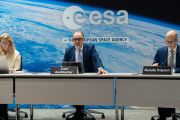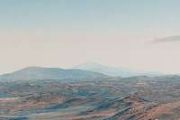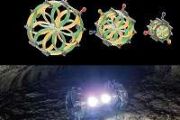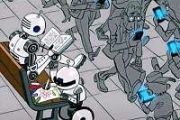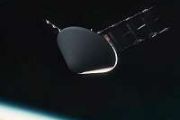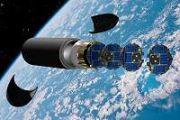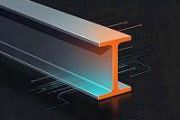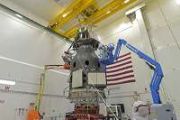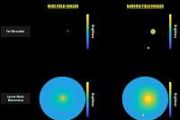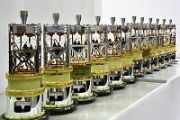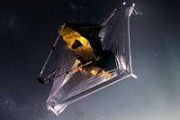
Copernical Team
Privately built, liquid-fuel rocket first in world to reach orbit in debut flight
 The TL 2, a carrier rocket developed by Space Pioneer, reached orbit on Sunday afternoon, becoming the first privately built, liquid-fuel rocket in China to reach orbit.
The rocket blasted off at 4:48 pm from the Jiuquan Satellite Launch Center in northwestern China. Shortly after, it placed a remote-sensing satellite in a sun-synchronous orbit about 500 kilometers above the Earth, Space P
The TL 2, a carrier rocket developed by Space Pioneer, reached orbit on Sunday afternoon, becoming the first privately built, liquid-fuel rocket in China to reach orbit.
The rocket blasted off at 4:48 pm from the Jiuquan Satellite Launch Center in northwestern China. Shortly after, it placed a remote-sensing satellite in a sun-synchronous orbit about 500 kilometers above the Earth, Space P Japan postpones H2A rocket launch after H3 failure
 Japan will postpone an H2A rocket launch originally scheduled for May until August or later, the nation's space agency said on Friday.
The decision was made as the rocket shares components in second-stage engines with its successor H3 rocket, which was forced to self-destruct shortly after takeoff in March.
According to the Japan Aerospace Exploration Agency (JAXA), the 57-meter H3 r
Japan will postpone an H2A rocket launch originally scheduled for May until August or later, the nation's space agency said on Friday.
The decision was made as the rocket shares components in second-stage engines with its successor H3 rocket, which was forced to self-destruct shortly after takeoff in March.
According to the Japan Aerospace Exploration Agency (JAXA), the 57-meter H3 r ISRO conducts the Reusable Launch Vehicle Autonomous Landing Mission
 ISRO successfully conducted the Reusable Launch Vehicle Autonomous Landing Mission (RLV LEX). The test was conducted at the Aeronautical Test Range (ATR), Chitradurga, Karnataka in the early hours on April 2, 2023.
The RLV took off at 7:10 am IST by a Chinook Helicopter of the Indian Air Force as an underslung load and flew to a height of 4.5 km (above MSL). Once the predetermined pillbox
ISRO successfully conducted the Reusable Launch Vehicle Autonomous Landing Mission (RLV LEX). The test was conducted at the Aeronautical Test Range (ATR), Chitradurga, Karnataka in the early hours on April 2, 2023.
The RLV took off at 7:10 am IST by a Chinook Helicopter of the Indian Air Force as an underslung load and flew to a height of 4.5 km (above MSL). Once the predetermined pillbox NASA's first flight with crew critical to long-term return to the moon
 Astronauts on their first flight aboard NASA's Space Launch System (SLS) rocket and Orion spacecraft will venture around the Moon. Their mission will be to confirm all of the spacecraft's systems operate as designed with crew aboard in the actual environment of deep space. The Artemis II flight test will be NASA's first mission with crew and will pave the way to land the first woman and next man
Astronauts on their first flight aboard NASA's Space Launch System (SLS) rocket and Orion spacecraft will venture around the Moon. Their mission will be to confirm all of the spacecraft's systems operate as designed with crew aboard in the actual environment of deep space. The Artemis II flight test will be NASA's first mission with crew and will pave the way to land the first woman and next man Do Earth-like exoplanets have magnetic fields
 Earth's magnetic field does more than keep everyone's compass needles pointed in the same direction. It also helps preserve Earth's sliver of life-sustaining atmosphere by deflecting high energy particles and plasma regularly blasted out of the sun. Researchers have now identified a prospective Earth-sized planet in another solar system as a prime candidate for also having a magnetic field - YZ
Earth's magnetic field does more than keep everyone's compass needles pointed in the same direction. It also helps preserve Earth's sliver of life-sustaining atmosphere by deflecting high energy particles and plasma regularly blasted out of the sun. Researchers have now identified a prospective Earth-sized planet in another solar system as a prime candidate for also having a magnetic field - YZ 1st moon crew in 50 years includes woman, Black astronaut

Japanese company successfully operates its water-based propulsion system in orbit

New in-space propulsion techniques seem to be popping out of the woodwork. The level of innovation behind moving things around in space is astounding, and now a company from Japan has just hit a significant milestone. Pale Blue, which I assumed was named as a nod to a beloved Carl Sagan book, recently successfully tested their in-orbit water-based propulsion system, adding yet another safe, affordable propulsion system to satellite designers' repertoires.
Using water to jet around space might seem relatively simplistic. However, despite its simplicity and relatively low cost, water jets for satellitepropulsion systems have not yet been widely adopted. This first Pale Blue system, which launched with Sony's EYE satellite as part of its STAR SPHERE program to take pictures of the Earth, was the first time the company successfully tested its system in space.
They did so by operating it for approximately two minutes in early March and adjusting the EYE satellite's orbit in LEO.
NASA plans 2 super pressure balloon test flights from New Zealand
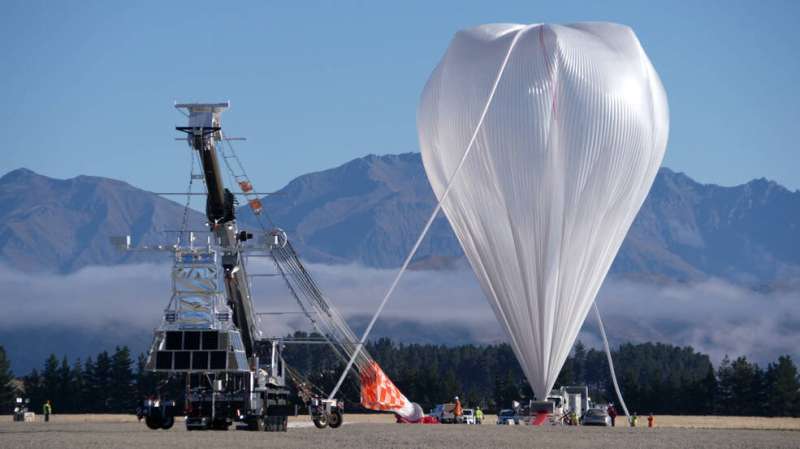
NASA's Scientific Balloon Program is scheduled to conduct two super pressure balloon (SPB) launches from Wānaka, New Zealand, to further test and qualify the technology, which can offer cost savings compared to space missions.
While the two launches are primarily to test the SPB technology, NASA is also flying science payloads as missions of opportunity on each balloon. The balloons may also be visible from the ground during their flights, which are planned for up to 100 days or more.
"The super pressure balloon technology is a real game-changer for conducting cutting-edge science at the edge of space at a fraction of the cost of flying into space," said Debbie Fairbrother, NASA's Balloon Program Office chief based at the agency's Wallops Flight Facility in Virginia.
First woman, Black astronaut, Canadian to make 2024 flight around Moon
 NASA unveiled the crew on Monday for its first human mission to the Moon in more than 50 years - including the first woman and Black man to participate in a lunar flight.
Three Americans and one Canadian will fly around the Moon next year, becoming the first astronauts to venture that deep into space since the historic Apollo missions ended in 1972.
The flight, dubbed Artemis II, is sch
NASA unveiled the crew on Monday for its first human mission to the Moon in more than 50 years - including the first woman and Black man to participate in a lunar flight.
Three Americans and one Canadian will fly around the Moon next year, becoming the first astronauts to venture that deep into space since the historic Apollo missions ended in 1972.
The flight, dubbed Artemis II, is sch Kenya to launch first operational satellite next week
Kenya will launch its first operational satellite next week in a landmark achievement for the country's space program, the government said on Monday.
Taifa-1, or Nation-1 in Swahili, is scheduled to be launched on April 10 aboard the SpaceX Falcon 9 rocket from the Vandenberg Space Force Base in California.
"The mission is an important milestone," the defense ministry and Kenya Space Agency said in a joint statement, adding that it would contribute significantly to the country's "budding space economy".
The observation satellite is "fully designed and developed" by Kenyan engineers and will be used to provide data on agriculture and food security, among other areas, the statement said.
Testing and manufacturing of the parts were done in collaboration with a Bulgarian aerospace manufacturer, it added.
An East African economic powerhouse, Kenya is suffering its worst drought in decades after five failed rain seasons.
The satellite launch will add to a push by African nations for scientific innovation and the development of space programs.
Egypt was the first African country to send a satellite into space in 1998.
In 2018, Kenya launched its first experimental nano-satellite from the International Space Station.
As of 2022, at least 13 African countries had manufactured 48 satellites, according to Space in Africa, a Nigeria-based firm that tracks African space programs.

